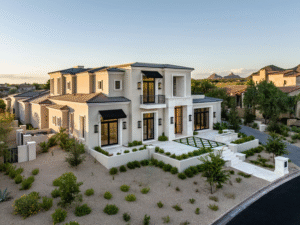HomeDesign Ideas and Inspiration for Your Dream Home

Image Source: www.kbsa.org.uk
Creating a personalised living space requires careful planning and creative vision. Whether undertaking a complete renovation or selective room updates, thoughtful HomeDesign transforms residential spaces into sanctuaries that reflect individual tastes.
Modern design principles successfully blend aesthetic appeal with functional practicality. Every decision should serve both visual and utilitarian purposes, ensuring spaces work beautifully for everyday life.
Professional-quality outcomes are accessible to homeowners at all experience levels. From complete beginners to those with existing knowledge, anyone can achieve remarkable results with the right guidance.
This article explores contemporary trends, space optimisation techniques, and technology integration. It also covers expert collaboration opportunities for those seeking comprehensive design solutions.
The content serves as a valuable resource for active home improvement projects. Strategic choices in materials, layouts, and furnishings can significantly elevate everyday living experiences.
Key Takeaways
- Thoughtful planning is essential for successful home transformations
- Modern design balances aesthetic appeal with practical functionality
- Professional results are achievable regardless of experience level
- Space optimisation techniques maximise living area potential
- Technology integration enhances contemporary living spaces
- Expert collaboration can elevate final design outcomes
- Strategic material choices impact long-term satisfaction
Introduction to Modern HomeDesign Trends
Modern living spaces are increasingly defined by a distinct set of design principles that prioritise both form and function. This contemporary approach reflects a cultural shift towards mindful living, embracing sustainability, minimalism, and seamless technology.
Understanding the philosophy behind this aesthetic is the first step. The following insights explore the core components shaping today’s most sought-after interiors.
Understanding Contemporary Home Design
At its heart, contemporary design champions simplicity and clarity. It favours clean, unbroken lines and open-plan configurations that enhance the flow of natural light. This creates an environment that feels both expansive and intimately welcoming.
The psychological impact is significant. Thoughtful spatial arrangements and material selections contribute directly to a sense of wellbeing and comfort. The influence of historical movements like Scandinavian minimalism, Japanese wabi-sabi, and mid-century modernism is clear, informing today’s balanced and timeless style.
Key Elements Shaping Today’s Interiors
Several fundamental elements combine to create the contemporary look. A neutral colour palette acts as a calm foundation, often punctuated by bold accent pieces for visual interest.
Essential features include:
- Multi-functional furniture that maximises space and utility.
- The integration of natural materials like wood and stone for textural richness.
- An emphasis on visual simplicity that avoids clutter.
This style proves highly adaptable. Homeowners can introduce these elements through strategic updates, such as new lighting or statement furniture, achieving a modern aesthetic without a full-scale renovation.
The Evolution of Home Design Concepts
House design philosophies have evolved significantly from rigid traditional formats to fluid contemporary expressions. This transformation reflects changing family dynamics and cultural influences across generations.
From Traditional to Trendy
Traditional residential architecture featured formal room divisions and ornate detailing. These period-specific elements dominated house construction for centuries, prioritising function over personal expression.
Technological advancements and evolving family structures prompted major shifts in residential style. The move from compartmentalised layouts to open-plan configurations reflects modern preferences for social connectivity.
Design trends often follow cyclical patterns, with historical styles periodically resurging. Contemporary reinterpretations adapt traditional elements to modern sensibilities, creating fresh aesthetic approaches.
Globalisation and digital connectivity have accelerated cross-cultural design exchanges. Today’s trendy HomeDesign often synthesises multiple influences, creating personalised environments that reflect diverse inspirations.
Innovative HomeDesign Trends
The forefront of residential design is now characterised by a deliberate fusion of environmental stewardship and intelligent spatial planning. This approach moves beyond mere aesthetics to create homes that are both beautiful and profoundly responsible.
These trends focus on long-term value and wellbeing, integrating solutions that are as practical as they are visually appealing.
Eco-friendly Materials and Smart Layouts featuring Chiltern Marble
Sustainability is a cornerstone of modern interior design. Homeowners are increasingly selecting materials with a lower environmental impact.
Popular choices include:
- Reclaimed timber for flooring and feature walls.
- Recycled metal for light fixtures and hardware.
- Low-VOC paints to maintain healthier indoor air quality.
- Natural stone, such as the offerings from Chiltern Marble, prized for its durability and timeless beauty.
These materials develop a unique character over time, aligning with a contemporary style that values authenticity.
Alongside material choices, smart layouts are crucial. The primary goal is to maximise the utility of every available space. This is achieved through multi-functional furniture and thoughtful room configurations that improve daily circulation.
This intelligent design creates adaptable interior environments. Spaces can evolve with a family’s needs, avoiding the need for costly future renovations. The integration of natural light and organic forms, known as biophilic design, further enhances the connection between the home and the natural world.
Designing Bespoke Spaces for Every Room
Achieving a harmonious home requires a bespoke approach. The function and atmosphere of every individual room must be carefully considered. This tailored strategy ensures each space supports daily life perfectly.
Generic solutions often fail to address specific needs. A customised design accommodates unique preferences and lifestyle peculiarities. This creates an environment that is both highly functional and personally meaningful.
Customised Living Areas and Private Retreats
The living area serves as a home’s social hub. It must adapt to relaxation, entertainment, and family gatherings. Flexible furniture and clever layouts are essential for this multifunctional space.
In contrast, the bedroom is a private retreat. Its design should prioritise rest and personal expression. A calm colour palette and minimal clutter contribute to a sleep-conducive environment. This balance of aesthetic appeal and practicality is key.
Mapping Unique Room Functions
Effective design begins by analysing how a room is used. Identifying primary activities guides the spatial configuration. This process, known as function mapping, ensures the layout supports its purpose.
Traffic flow between rooms is also critical. Arrangements should facilitate smooth transitions throughout the home. This logical progression enhances daily routines and overall comfort.
Key Considerations for Bespoke Room Design
| Room Type | Primary Function | Key Design Focus | Recommended Style Elements |
|---|---|---|---|
| Living Room | Socialising, Relaxation | Flexible seating, open flow | Modular sofas, statement lighting |
| Bedroom | Sleep, Personal Sanctuary | Calm atmosphere, storage | Soft textiles, blackout solutions |
| Home Office | Focus, Productivity | Ergonomics, minimal distractions | Built-in shelving, task lighting |
Evaluating an existing room configuration reveals improvement opportunities. Targeted modifications can then enhance both functionality and personal style. Each room gains a distinct character while contributing to a cohesive whole-house aesthetic.
Maximising Small Spaces with Clever Home Design Ideas
A limited floor area presents a unique opportunity for inventive design solutions. The right approach can transform a cramped room into a highly functional and visually expansive environment.
Success hinges on two core principles: ingenious storage and intelligent layout. These elements work together to eliminate clutter and enhance the perception of space.
Creative Storage and Layout Optimisation
Effective storage is the cornerstone of small-space living. Built-in cabinetry that reaches the ceiling utilises vertical space efficiently. Furniture with hidden compartments, like ottomans or beds with drawers, keeps belongings out of sight.
This creates a tidy, open atmosphere. Under-stair areas and alcoves also offer valuable storage potential that is often overlooked.
Layout optimisation is equally critical. Choosing furniture scaled appropriately for the room prevents it from feeling overwhelmed. Strategic placement is key.
Mirrors are a powerful tool for amplifying light and creating an illusion of depth. A light, neutral colour palette on walls and floors further contributes to a feeling of airiness.
Multi-functional pieces are essential. A fold-down desk can serve as a workspace that disappears when not in use. A sofa bed accommodates guests without dedicating a whole room to a spare bed.
These clever home design ideas prove that spatial constraints need not limit style or comfort. A well-planned small room can feel surprisingly spacious and welcoming.
The Role of Furniture in Enhancing Home Design
Successful interior design hinges on furniture that seamlessly blends aesthetic ambition with everyday practicality. These pieces are far more than decorative items; they define a room’s character and establish its functional zones.
Every furniture selection influences how people move through a space. It affects the overall atmosphere, acting as both a necessity and a style statement.
Integrating Style with Function
Choosing furniture requires balancing visual appeal with utility. Ergonomic comfort should never be sacrificed for looks. This integration is key to a liveable and beautiful home.
Scale is a critical principle. Appropriately sized pieces maintain spatial balance. Oversized or undersized furniture can disrupt harmony and impede movement.
Modern tools offer significant advantages. Platforms provide access to over 10 million branded 3D models. Homeowners can drag and drop items into their room plans.
This allows for visualising potential purchases accurately. It prevents costly mistakes and ensures a perfect fit before buying.
Creating cohesive arrangements is essential. In open-plan areas, furniture should facilitate conversation and allow easy traffic flow. It helps establish clear zones for different activities.
Various style approaches inform furniture choices. From mid-century modern to contemporary minimalism, pieces reinforce the overall design narrative.
Investment strategy is also important. Key items like sofas and beds warrant higher expenditure due to frequent use. For less critical pieces, budget-conscious options can be appropriate.
Furniture Selection Guide for Key Living Spaces
| Room | Primary Function | Furniture Priority | Recommended Style Cues |
|---|---|---|---|
| Living Room | Socialising, Relaxation | Comfort, Durability | Modular seating, natural wood accents |
| Dining Area | Eating, Entertaining | Scale, Seating Capacity | Extendable table, upholstered chairs |
| Bedroom | Rest, Storage | Support, Storage Solutions | Low-profile bed frame, soft textiles |
| Home Office | Productivity, Focus | Ergonomics, Cable Management | Adjustable desk, built-in shelving |
Thoughtful furniture selection is the cornerstone of effective HomeDesign. It transforms a house into a functional and expressive home. The right pieces create an environment that supports both daily life and personal style.
This approach ensures every item contributes to a cohesive and comfortable living space. Good HomeDesign starts with intelligent furniture choices.
Getting Started with Your Home Design Project
Beginning a home design project can feel daunting, but a structured approach makes the process manageable and rewarding. Modern digital tools have democratised professional design, allowing anyone to plan their space with confidence.
Before diving in, it helps to gather inspiration and take accurate room measurements. Defining a budget and functional needs provides a clear framework for decisions.
Step-by-Step Process for Beginners
A simple three-step methodology transforms ideas into a tangible plan. This logical sequence builds from the foundation upwards.
1. Draw: Start by uploading an existing floor plan or sketching your space in 2D. This creates the essential blueprint for your project.
2. Decorate: Use an intuitive drag-and-drop interface to furnish your plan. Explore millions of 3D furniture models to find the perfect pieces.
3. Visualise: Generate photorealistic renders with one-click cloud technology. This allows you to evaluate your design choices before any physical work begins.
This process eliminates the fear of making costly mistakes. You can experiment freely without financial commitment. It is an iterative journey, where initial attempts are valuable learning experiences.
Setting a realistic timeline and prioritising key rooms helps maintain momentum. This method ensures you get started on the right foot, turning a complex project into an achievable goal.
Visualisation Techniques: 3D Models and 4K Renderings
Modern visualisation technology has revolutionised how homeowners plan their spaces. Sophisticated tools transform abstract concepts into tangible representations before implementation begins.
These techniques allow thorough evaluation of aesthetic choices and spatial configurations. Homeowners can experiment freely without physical commitment.
Utilising Advanced Software Tools
Contemporary software creates comprehensive digital representations of house interiors. Users explore spaces from multiple perspectives and test countless design variations.
Built-in cloud rendering technology generates photorealistic images with single-click simplicity. This makes professional-quality visualisations accessible regardless of technical expertise.
The iterative refinement process accelerates design development. Multiple style variations can be generated and compared rapidly.
Benefits of High-Resolution Presentations
4K rendering capabilities deliver ultra-realistic views with exceptional detail clarity. Viewers assess material textures and lighting conditions with unprecedented accuracy.
High-resolution images enable more confident decision-making by eliminating guesswork. Stakeholders evaluate proposals with complete visual understanding before committing resources.
Compelling presentations enhance communication between homeowners and contractors. This reduces misunderstandings and ensures executed work aligns with intended designs.
Comparing Visualisation Tool Capabilities
| Feature Type | Application Scope | Key Advantage | Project Scale Suitability |
|---|---|---|---|
| 3D Modelling | Spatial Planning | Virtual Walkthroughs | Complete House Renovations |
| Cloud Rendering | Material Visualisation | One-Click Processing | Single-Room Updates |
| 4K Resolution | Detail Assessment | Texture Accuracy | All Project Sizes |
Practical guidance helps maximise these tools for various projects. From complete renovations to room updates, appropriate application across different scales ensures optimal results.
This technological approach represents a significant advancement in residential design planning. It brings professional-grade precision to personal HomeDesign projects.
Inspiration from Real-life Home Projects
Real-life home transformations offer the most convincing proof that great design is achievable. Examining completed projects provides tangible inspiration and demonstrates how principles work in practice.
These success stories span various property types and budgets. They show how clever ideas can overcome spatial constraints and personal preferences.
Case Studies and Success Stories
Curated case studies analyse the specific strategies behind successful outcomes. They detail the challenges faced during execution and the solutions implemented.
This analysis reveals common pitfalls to avoid. It also illustrates realistic results from thoughtful planning.
Exploring community images on design platforms provides unlimited inspiration. Users discover creative solutions they might not have conceived independently.
The key is to adapt observed ideas to suit individual circumstances. Direct replication is rarely as effective as personalised interpretation.
Projects range from minor cosmetic updates to full renovations. This demonstrates that meaningful improvements need not be extensive.
These real-life examples are highly motivational. They reassure homeowners that professional-quality results are accessible, regardless of prior experience.
Embracing the Latest in Design Technology
The landscape of home planning is being reshaped by a new generation of intuitive design applications. These tools bridge the gap between professional software and amateur ambition.
They make sophisticated planning accessible to everyone. The key lies in their user-centric development.
Innovative Apps and Intuitive Interfaces
Modern design apps prioritise user experience above all else. Their interfaces are celebrated for being logical and visually clear.
Users often describe them as “eye candy” that is surprisingly easy to learn. Mastery can be achieved in minutes, not hours.
A well-designed interface features several key elements:
- A clean, uncluttered layout that guides the user naturally.
- Drag-and-drop functionality for effortless object placement.
- Context-sensitive tools that appear when needed.
This thoughtful design allows individuals to focus on creativity. They spend less time wrestling with complicated controls.
The availability of these applications on mobile devices is a significant advantage. Users can sketch ideas or refine projects anywhere.
This untethers the design process from the desktop. Inspiration can be captured during a commute or while waiting.
Advanced technologies like artificial intelligence and augmented reality are seamlessly integrated. They enhance functionality without complicating the interface.
This technological leap democratises professional-quality outcomes. It empowers a broader audience to achieve their vision.
Community-Driven Ideas and User Projects
The rise of community-driven design represents a fundamental shift in how people develop their living spaces. Digital platforms create vibrant ecosystems where millions share their creative journeys.
These communities foster collaboration across all experience levels. They transform individual projects into collective learning opportunities.
Sharing Designs and Peer Feedback
Platforms trusted by over 20 million designers worldwide enable rich idea exchange. Users upload their projects to receive constructive feedback from global peers.
This process identifies improvement opportunities that individuals might overlook. External perspectives validate successful elements and suggest innovative alternatives.
Observing diverse user projects expands design vocabularies. Beginners learn from advanced techniques while experts discover fresh interpretations.
Trending Concepts from Design Communities
Popular ideas gain visibility through community engagement and inspire derivative projects. These concepts adapt successful elements to new contexts organically.
Weekly challenges with prize opportunities motivate skill development through friendly competition. They encourage users to share ambitious projects and refine their capabilities.
The democratising effect allows recognition based purely on work quality. Traditional hierarchies give way to merit-based appreciation.
Comparative Analysis of Design Community Platforms
| Platform Feature | User Engagement Level | Feedback Mechanism | Project Scale Supported |
|---|---|---|---|
| Idea Sharing Forums | High Interaction | Structured Commenting | Single Room to Full Home |
| Weekly Challenges | Competitive Participation | Community Voting | Focused Design Tasks |
| Peer Review Groups | Targeted Collaboration | Detailed Critiques | Complete HomeDesign Projects |
Effective participation involves requesting specific feedback and offering helpful critiques. This approach extracts maximum value while contributing to collective knowledge.
Community platforms ultimately create supportive environments where creativity flourishes through shared inspiration and mutual support.
Expert Advice from Industry Leaders
Engaging with established industry specialists can elevate a residential project from a personal endeavour to a professionally executed vision. Their deep knowledge helps navigate complex decisions with confidence.
This guidance is particularly crucial for permanent installations where quality and technique are paramount. Expert input ensures long-term satisfaction and protects your investment.
Insights and Collaboration with Chiltern Marble Ltd
Partnering with specialists like Chiltern Marble Ltd provides access to premium materials and technical expertise. They offer insights that transcend what independent research can achieve.
The consultation process involves a detailed assessment of your space and aspirations. Experts then develop tailored recommendations that balance your desired style with practical constraints.
Key advantages of professional collaboration include:
- Foresight into emerging interior trends and potential pitfalls.
- Relationships with quality suppliers for superior materials.
- The skill to execute complex installations requiring specialised knowledge.
Homeowners retain creative control over the final design while professionals manage technical complexities. This partnership prevents costly mistakes and accelerates project completion.
Finding a reputable expert involves checking credentials and understanding their service offerings. A productive relationship is key to achieving a superior interior result for your home. This approach justifies any consultation fees through the value it adds to your HomeDesign project.
Boosting Creativity Through Thoughtful Layouts
A thoughtfully arranged interior can serve as a powerful catalyst for personal creativity. The organisation of a room directly influences mood and the capacity for innovative thinking.
Strategic layout decisions establish environments that support diverse activities. They encourage experimental approaches to everyday living.
Incorporating Artistic and Practical Elements
Successful layouts strike a careful balance. They satisfy functional needs while incorporating expressive details that reflect personal style.
This involves creating flexible space that can adapt to different uses. A corner can become a reading nook or a painting studio.
Modern design platforms are invaluable for this process. Their intuitive tools help users unleash creativity by removing technical barriers.
Individuals can experiment freely with ideas and rapidly test different configurations. This fosters a dynamic approach to HomeDesign.
Practical guidance includes dedicating areas for hobbies and displaying personal collections. Adaptable furniture and energising colour schemes also boost creativity.
Viewing your home as a dynamic canvas keeps the space feeling fresh. It encourages ongoing refinement aligned with your evolving style and interests.
Resources that help develop creativity systematically are key. They build confidence and expand capabilities for more personalised HomeDesign outcomes.
Local Inspirations: Designing Homes in the UK
Designing a house in the United Kingdom involves a unique blend of respecting historical character and meeting modern living standards. The approach must balance aesthetic appeal with practical compliance to regional specifics.
This creates a distinctive challenge and opportunity for homeowners. Understanding the local context is essential for a successful project.
Adapting to British Aesthetics and Regulations
British interior style often showcases a deep appreciation for heritage. Many homes feature period details like cornices or original fireplaces.
A contemporary style might layer modern furniture against these traditional backdrops. This fusion creates a rich, personalised interior.
Regulatory compliance is equally critical. UK building regulations govern insulation, energy efficiency, and safety.
Properties in conservation areas have further restrictions to preserve local character. Navigating these rules is a fundamental part of the design process for any house.
Finding Locally Sourced Materials
Sourcing materials within the UK offers significant advantages. It supports regional economies and reduces the environmental impact of transportation.
Local suppliers provide products tested for British climate conditions. This includes materials suited for managing dampness and maximising heat retention.
British stone, timber, and textiles bring authentic character to a home. They ensure new additions are compatible with the existing house structure.
This local approach results in a coherent and durable interior. It is a cornerstone of thoughtful HomeDesign in the UK context.
Leveraging Advanced Tools for Optimal Home Design
Contemporary homeowners now have access to planning technologies once reserved for professionals. These digital solutions provide comprehensive evaluation capabilities for any house project.
Software Reviews and Digital Planning Techniques
Leading design programs offer sophisticated 3D room planner functionality. They enable users to create complete house models or focus on specific areas.
Intuitive software converts basic 2D sketches into editable 3D representations. This dramatically reduces the technical expertise required for professional results.
The key advantage lies in rapid iteration through design alternatives. Users can test furniture arrangements and material choices virtually. This enhances decision confidence before physical work begins.
Practical applications include precise spatial measurements and realistic visualisation. Many apps facilitate seamless collaboration with contractors through shared files.
When selecting a program, consider your project scope and technical comfort level. The right tools make advanced HomeDesign accessible to everyone with creative ambition.
Innovative Methods to Plan and Visualise Your Space
Translating abstract design concepts into actionable blueprints requires a systematic methodology. Modern tools help bridge imagination and reality, ensuring your vision matches the final result.
Strategies to Transform Ideas into Concrete Designs
Begin by capturing inspiration through mood boards and sketches. Digital platforms then allow you to develop these initial ideas into detailed plans.
These tools provide comprehensive libraries of furniture and materials. You can experiment with different arrangements for each room in your house.
The iterative process is crucial for successful project outcomes. Create multiple versions of your space plan to compare alternatives.
High-quality visualisation is the key advantage of modern planning software. Platforms generate amazing 4K images that show exactly how your design will look.
This eliminates guesswork when discussing plans with contractors. Everyone sees the same vision for the house project.
Many homeowners find best free home interior design tools perfectly adequate for their needs. These applications handle everything from decoration to full remodelling.
Planning Approach Comparison for Different Spaces
| Space Type | Primary Planning Focus | Recommended Visualisation Technique | Key Considerations |
|---|---|---|---|
| Living Room | Traffic flow and social zones | 3D walkthrough with furniture | Lighting at different times of day |
| Kitchen | Work triangle efficiency | Detailed cabinet layout | Storage accessibility and workflow |
| Bedroom | Privacy and relaxation | Atmosphere rendering | Sound insulation and light control |
| Home Office | Productivity and ergonomics | Equipment placement simulation | Cable management and distraction minimization |
This systematic approach to HomeDesign ensures your project progresses smoothly from concept to completion. Each room receives the careful planning it deserves.
Conclusion
Ultimately, successful residential design balances timeless principles with contemporary innovations to create spaces that truly resonate. The guidance presented demonstrates that professional-quality outcomes are accessible through modern tools and strategic planning.
Every house holds transformative potential waiting to be unlocked. Beginning with modest room updates builds confidence for more ambitious projects.
The journey of home design should be viewed as ongoing rather than finite. Personal style evolves alongside changing needs and accumulated experiences.
This approach ensures each interior reflects individual identity while enhancing daily living. The satisfaction comes from creating environments that feel authentically like home.
FAQ
What are the first steps to take when starting a home design project?
The initial step involves defining your vision and establishing a clear plan. It is advisable to gather inspiration, set a realistic budget, and consider the functionality of each space. Many find it helpful to consult with professionals or use digital planning tools to visualise their ideas before commencing any physical work.
How can I make the most of a small space in my home?
Maximising a small space requires clever design strategies. Focus on multifunctional furniture, creative storage solutions, and an open layout to enhance the feeling of space. Using light colours and strategic lighting can also make a room appear larger and more inviting.
What role does furniture play in interior design?
Furniture is fundamental to interior design, serving both practical and aesthetic purposes. It defines the function of a room, influences traffic flow, and establishes the overall style. Selecting pieces that balance comfort, quality, and visual appeal is key to creating a cohesive and harmonious environment.
Are 3D models and visualisations useful for home design?
Absolutely. 3D models and high-resolution renderings are invaluable tools. They allow homeowners to see a realistic preview of their design choices, experiment with different layouts and materials, and make informed decisions before any construction begins, thereby reducing costly errors.
Where can I find inspiration for my home’s interior?
Inspiration can be found in many places, including online design communities, social media platforms like Pinterest, and real-life case studies. Visiting showrooms, reading design magazines, and observing architectural trends can also provide a wealth of creative ideas for your project.
How important is it to use locally sourced materials in the UK?
Using locally sourced materials, such as Chiltern Marble, supports regional businesses and can reduce the environmental impact of transportation. These materials often align well with British architectural styles and building regulations, ensuring a design that is both authentic and compliant.
What are the benefits of using a dedicated home design app?
A dedicated app offers an intuitive interface for planning and visualising your space. These programmes simplify the design process, allowing users to experiment with layouts, furniture placement, and colour schemes efficiently. They are excellent for both beginners and experienced designers to bring their concepts to life.





